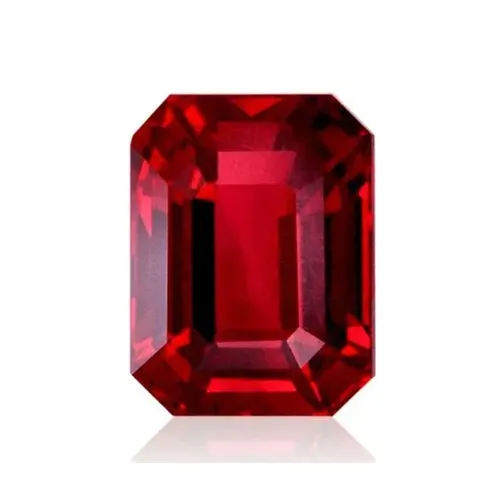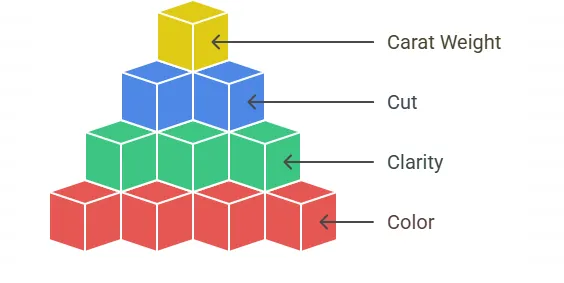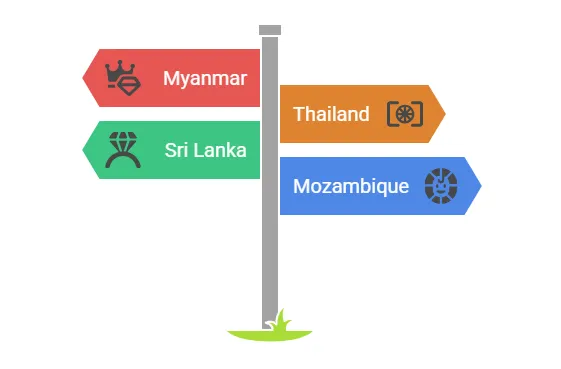
Lorem ipsum dolor sit amet, consectetur adipiscing elit. Etiam vel risus imperdiet, gravida justo eu.

Ruby, known as the “king of gemstones,” has fascinated people for centuries due to its stunning red color and rarity. When it comes to buying or selling
rubies, the price plays a crucial role. However, understanding what determines the ruby gemstone price can be complex, as many factors influence the
value of these precious stones. This article will explore the key elements affecting ruby prices, helping buyers and enthusiasts make informed decisions.

Rubies are a variety of the mineral corundum, distinguished primarily by their rich red color caused by trace amounts of chromium. The quality of a ruby is
judged by its color, clarity, cut, and carat weight—the famous “4 Cs” of gemstones. Unlike diamonds, color holds more significance in rubies, especially the
intensity and hue of red.
The most valuable rubies feature a vibrant, deep red color often referred to as “pigeon blood red.” This rare shade commands premium prices because of its
rarity and visual appeal. Rubies with a pinkish or purplish tint usually cost less. Generally, the richer and more vivid the red, the higher the price.
Rubies, like other gemstones, often contain inclusions—tiny imperfections inside the stone. While some inclusions are tolerated, rubies that are eye-clean
(novisible inclusions to the naked eye are significantly more valuable.However,some inclusions can create a desirable“silk”effect that enhances the stone’s
appearance,adding complexity to price evaluation.
The cut of a ruby influences its brilliance and overall appearance. Well-cut rubies maximize light reflection and color intensity, increasing their value.
Common rubyshapes include oval, cushion, round, and emerald cuts. While shape preferences can vary, the quality of the cut is a decisive factor in
pricing.
Larger rubies are rare and thus more expensive per carat compared to smaller ones. Prices typically rise exponentially with size. For example, a 5-carat
ruby will costsignificantly more per carat than a 1-carat ruby of similar quality.

The origin of a ruby affects its price considerably. Rubies from Myanmar (formerly Burma) are historically the most prized due to their exceptional color and
quality.Rubies from Thailand, Sri Lanka, and Mozambique are also common but generally less expensive. Provenance can add prestige and value to a ruby
gemstone.
Many rubies undergo treatments like heat treatment to improve color and clarity. Untreated rubies are rarer and more valuable. Buyers should always ask
for certificationfrom reputable labs confirming treatments or lack thereof.
Ruby prices fluctuate with market trends,fashion,and collector interest. In recent years,the demand for high-quality rubies has surged,pushing prices upward
Understandingmarket dynamics is essential for buyers and sellers alike.
Conclusion
The ruby gemstone price is determined by a combination of color, clarity, cut, carat weight, origin, and treatment. For anyone interested in investing in
rubies, knowledgeof these factors is vital to ensure fair pricing and wise purchases. Whether buying for jewelry, collection, or investment, rubies offer
timeless beauty and value that continuesto captivate the world.
Quisque consectetur convallis ex, quis tincidunt ligula placerat et. Nam quis leo sed tortor blandit commodo. Quisque ultrices, justo non convallis accumsan, ante magna ornare sapien, quis venenatis diam libero nec orci. Aenean semper interdum odio in dictum. Nunc sed augue lorem. Duis nec sollicitudin orci. Vivamus lectus metus, efficitur non arcu id, pulvinar sollicitudin ipsum. Nunc sed consectetur risus. Morbi tincidunt lorem non iaculis bibendum.
Proin ullamcorper pretium orci. Donec nec scelerisque leo. Nam massa dolor, imperdiet nec consequat a, congue id sem. Maecenas malesuada faucibus finibus. Donec vitae libero porttitor, laoreet sapien a, ultrices leo. Duis dictum vestibulum ante vitae ullamcorper. Phasellus ullamcorper, odio vitae eleifend ultricies, lectus orci congue magna.
Proin ullamcorper pretium orci. Donec nec scelerisque leo. Nam massa dolor, imperdiet nec consequata congue id sem. Maecenas malesuada faucibus finibus. Donec vitae libero porttitor, laoreet sapien a, ultrices leo. Duis dictum vestibulum ante vitae ullamcorper. Phasellus ullamcorper, odio vitae eleifend ultricies magna.
Jewelry Manager
Quisque consectetur convallis ex, quis tincidunt ligula placerat et. Nam quis leo sed tortor blandit commodo. Quisque ultrices, justo non convallis accumsan, ante magna ornare sapien, quisvene natis diam libero nec orci. Aenean semper interdum odio in dictum. Nunc sed augue lorem. Duis nec sollicitudin orci. Vivamus lectus metus, efficitur non arcu id, pulvinar sollicitudin ipsum. Nunc sed consectetur risus. Morbi tincidunt lorem non iaculis bibendum.
Where exquisite design meets certified gemstones – because you deserve brilliance
